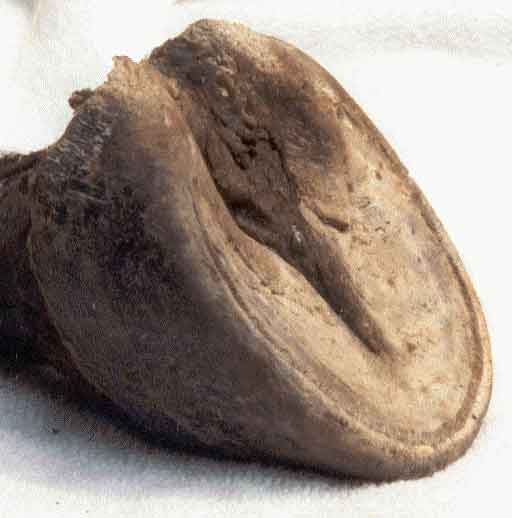Do You Know About Wild Animals Hoof?

Different animals have different hooves that are specifically designed to help them adapt to their habitat. Some animals have even three hooves, and it is not rare for an animal’s natural hoof to be worn out due to wear and tear. What do you know about wild animal hooves and their characteristics? Take up the quiz below and see just how high you score.
- 1.
True or False: White hooves are usually softer than pigmented hooves.
- A.
True
- B.
False
Correct Answer
B. FalseExplanation
It's a long-standing myth that white hooves are softer.Rate this question:
-
- 2.
Approximately how many miles (per day) do horses need to maintain their hooves without trimming?
- A.
5
- B.
10
- C.
20
Correct Answer
C. 20Explanation
Horses need to travel approximately 20 miles per day in order to naturally wear down their hooves without the need for trimming. This constant movement helps to keep their hooves at a healthy length and promotes proper hoof growth.Rate this question:
-
- 3.
Looking at the bottom of the hoof, the frog should take up __ of the length (from toe to heel)
- A.
1/3
- B.
1/2
- C.
2/3
Correct Answer
C. 2/3Explanation
The frog, which is the triangular structure at the bottom of the hoof, should ideally take up 2/3 of the length from the toe to the heel. This is because the frog acts as a shock absorber and helps distribute the weight evenly across the hoof. A healthy and well-developed frog is important for the overall soundness and balance of the horse's foot.Rate this question:
-
- 4.
Distal descent is caused by:
- A.
Peripheral loading of the wall
- B.
Chronic laminitis
- C.
Toe-first landing
Correct Answer
A. Peripheral loading of the wallExplanation
Distal descent refers to the sinking of the coffin bone within the hoof, and it can be caused by various factors. One of these factors is peripheral loading of the wall, which means that excessive weight and pressure are placed on the outer edges of the hoof wall. This uneven loading can lead to the displacement of the coffin bone downward. Chronic laminitis, inflammation of the laminae in the hoof, can also contribute to distal descent. Additionally, toe-first landing, where the horse lands on the toe instead of the heel, can further exacerbate the condition.Rate this question:
-
- 5.
How do you judge whether a hoof has developed full concavity?
- A.
When the hoof is no longer exfoliating sole material.
- B.
When the concavity reaches all the way to the wall in all directions.
- C.
When the depth reaches 3/4 inch.
Correct Answer
B. When the concavity reaches all the way to the wall in all directions.Explanation
Depth of concavity depends on the shape of the coffin bone. A hoof will begin concaving around the tip of the frog, and it will spread out to the wall. If there is a flat area next to the wall, then full concavity hasn't developed.Rate this question:
-
- 6.
What is the most reliable indicator of sole depth?
- A.
Sole concavity
- B.
Frog thickness
- C.
Collateral groove depth
- D.
Heel height
Correct Answer
C. Collateral groove depthExplanation
Collateral groove depth is the most reliable indicator of sole depth. The collateral groove refers to the groove that runs along the sides of the hoof wall, separating it from the sole. By measuring the depth of this groove, one can determine the thickness of the sole. A deeper collateral groove indicates a thicker sole, which is important for the overall health and soundness of the horse's hoof. Therefore, collateral groove depth is a key factor in assessing sole depth.Rate this question:
-
- 7.
What nutrients, often deficient in horse diets, are important to maintaining hoof health?
- A.
Copper, Zinc
- B.
Biotin, Iron
- C.
Salt, Biotin
- D.
Vitamin A and D
Correct Answer
A. Copper, ZincExplanation
Copper and zinc are important nutrients for maintaining hoof health in horses. These minerals play a crucial role in the formation and strength of the hoof structure. A deficiency in copper and zinc can lead to weak, brittle hooves and an increased risk of hoof-related issues such as cracks and infections. Therefore, ensuring an adequate intake of copper and zinc in a horse's diet is essential for maintaining optimal hoof health.Rate this question:
-
- 8.
Which of the following has been shown to cause navicular disease?
- A.
Biotin deficiency
- B.
Toe-first landing
- C.
Peripheral loading
- D.
Chronic laminitis
- E.
White line disease
Correct Answer
B. Toe-first landingExplanation
While many factors may contribute to abnormal movement, it's the toe-first landing that stresses the internal structures and leads to navicular disease.Rate this question:
-
- 9.
True or False: Hoof dressing used on a weekly basis will usually fix small cracks over the dorsal hoof wall.
- A.
True
- B.
False
Correct Answer
B. FalseExplanation
Putting oil over small cracks can trap bacteria and fungus in an anaerobic environment, leading to invasion. Maintaining a mustang roll and drying up the horse's environment are better solutions.Rate this question:
-
Quiz Review Timeline +
Our quizzes are rigorously reviewed, monitored and continuously updated by our expert board to maintain accuracy, relevance, and timeliness.
-
Current Version
-
Nov 16, 2023Quiz Edited by
ProProfs Editorial Team -
Mar 02, 2011Quiz Created by
Skipsteejsprat
- Amphibian Quizzes
- Bird Quizzes
- Cat Quizzes
- Dinosaur Quizzes
- Dog Quizzes
- Emperor Penguin Quizzes
- Endangered Species Quizzes
- Fish Quizzes
- Goat Quizzes
- Hamster Quizzes
- Horse Quizzes
- Insect Quizzes
- Invertebrate Quizzes
- Mammal Quizzes
- Mouse Quizzes
- Nematode Quizzes
- Pet Quizzes
- Pig Quizzes
- Rabbit Quizzes
- Reptile Quizzes
- Sheep Quizzes
- Zoo Quizzes
 Back to top
Back to top




